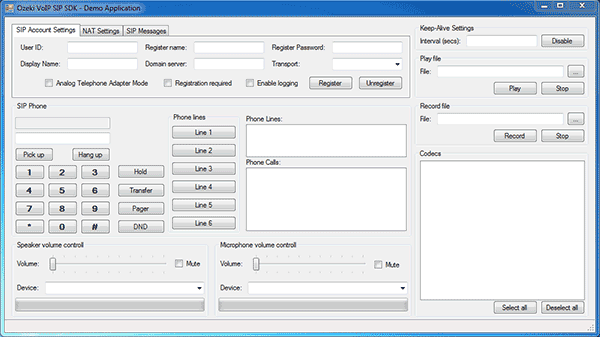|

|
 C# VOIP CALL TRANSFER EXAMPLE
-
Version
9.2.0
C# VOIP CALL TRANSFER EXAMPLE
-
Version
9.2.0
Ozeki VoIP SIP .Net SDK for developing call transfer
feature in a C# softphone to forward incoming calls
either with blind call transfer or with attended call
transfer. The source code represents the basic
implementation of call forwarding using the provided
methods of Ozeki SIP SDK. The sample program allows to
transmit incoming calls to another end point without
the originally called end point accepts the call. The
Ozeki Call Transfer sample program includes programming
solutions for implementing call transfer via blind
transfer or attended call transfer in a C# softphone.
BLIND CALL TRANSFER: when there is an incoming call, it
can be automatically or manually transferred to a
randomly selected end-point, for example, in a call
center it can be the first available agent. Usually
blind transfer is made automatically. In this example,
blind transfer is done by a direct redirection on the
server side. The server requires a list of valid
telephone numbers that can be possibly called when
transfer is needed. The server accepts the incoming
call and transfers it to one of the enlisted phone
numbers. In this sample program, the call is
transferred to the first number in the list, if it is
busy it switches to the second number, etc. The call
will be transferred to the first available end-point.
If all operators are busy it is possible to play a
voice message and ask the caller to callback then end
the call; or to hold the call and tries transferring
again from the beginning.
The transfer is done with a media connection. Meaning
that the server accepts the call, then it calls a
number from a list, the call is set to hold and when
the new call is established, the two-end points are
connected. ATTENDED CALL TRANSFER: in this case the
call is transferred intentionally to a specific end
point. The operator can type in the number of the
wished end-point and click TRANSFER. It differs from
blind transfer in that the number is got from the
operator not from the transfer list
|